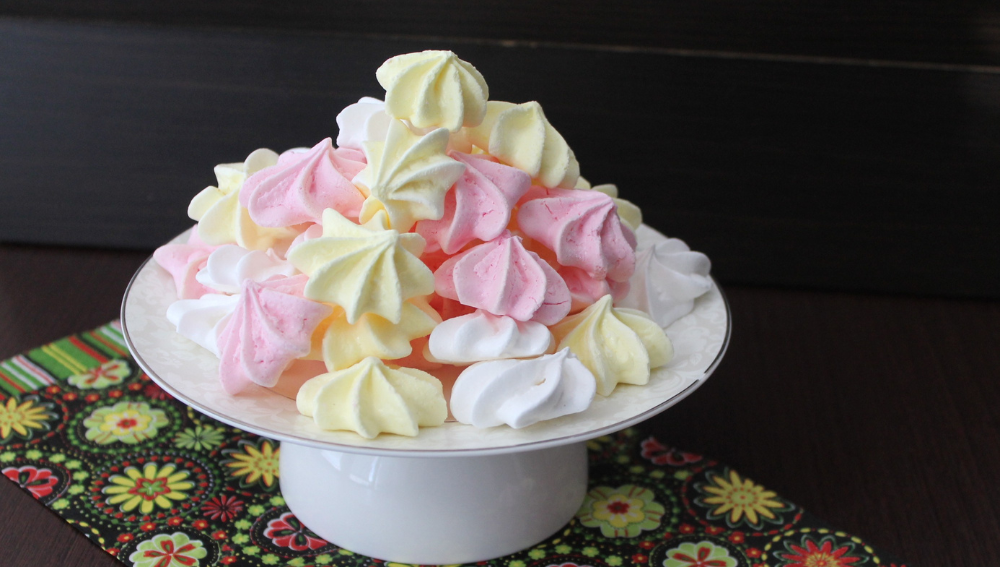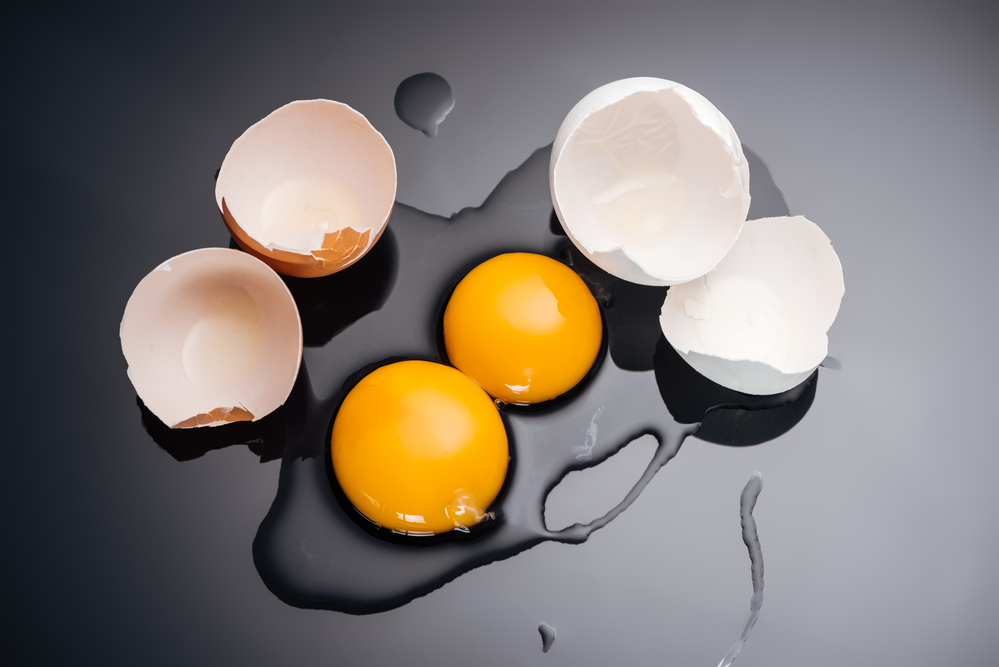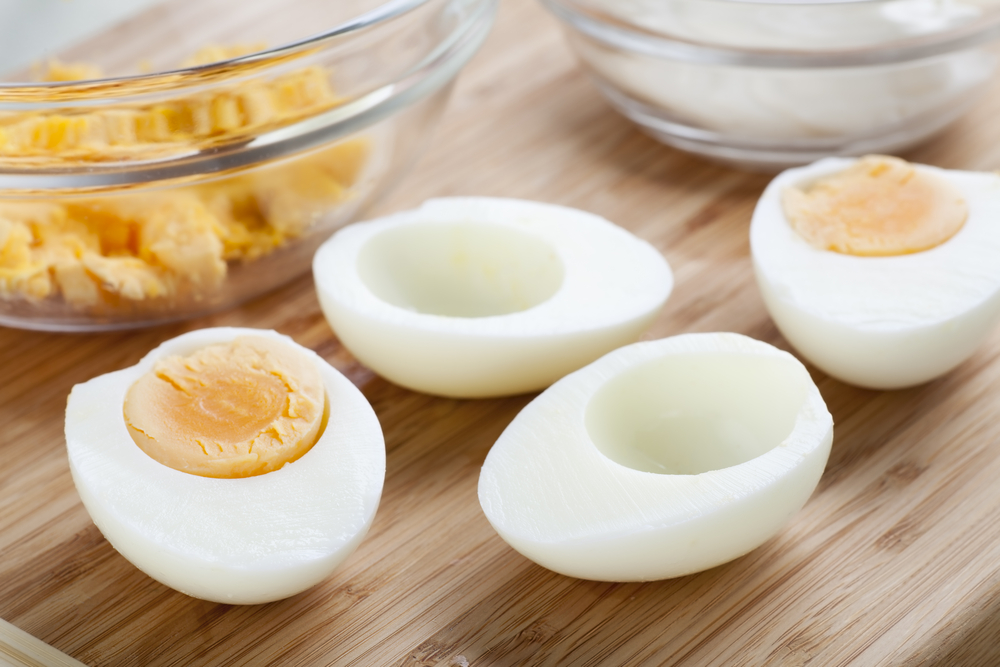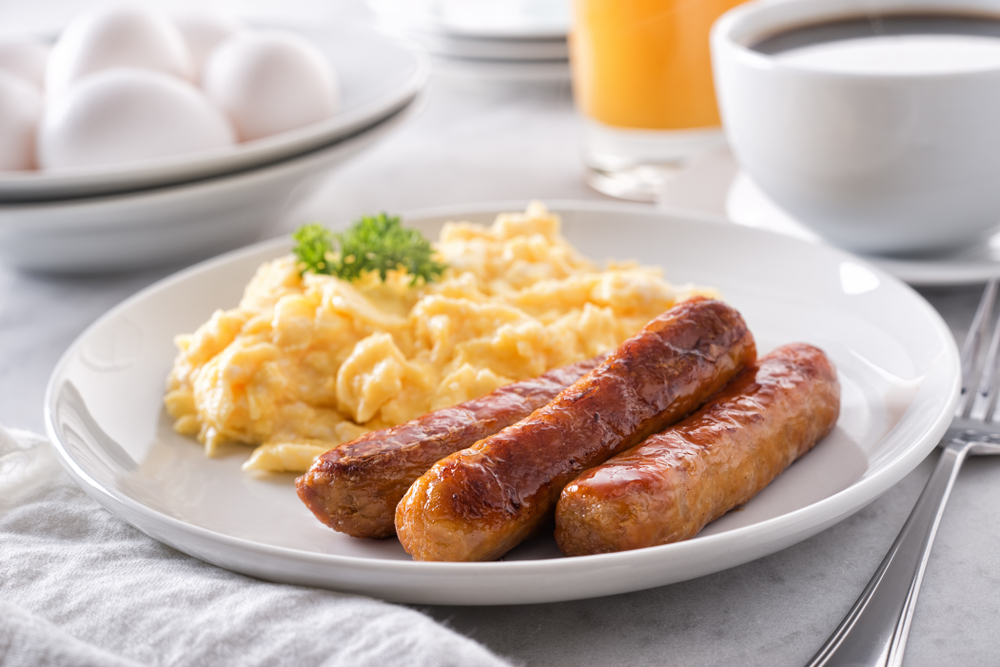Meringue, a light and airy dessert topping made from egg whites and sugar, is a popular ingredient in many different sweets and pastries.
However, when it comes to the question of whether or not you can eat meringue raw, it is essential to understand the risks and benefits associated with consuming uncooked egg whites.
Consuming raw meringue can lead to some potential risks, primarily due to the presence of uncooked egg whites. The primary concern is the potential for salmonella contamination, especially if you’re working with eggs that have not been pasteurized.
On the other hand, there is a nutritional side to this story as well, as meringue is low in calories and fat, making it an appealing choice for those watching their diets.
Key Takeaways
- Eating raw meringue can pose risks due to uncooked egg whites
- Meringue is low in calories and fat, making it an appealing treat
- It is crucial to consider safe consumption practices for meringue
What is Meringue

Meringue is a sweet confection made from whipped egg whites and sugar. It is a versatile dessert base used in various bakery items like meringue cookies, meringue cake, and fresh meringues.
There are three main types of meringue: French meringue, Swiss meringue, and Italian meringue, each with its own distinct characteristics and uses.
French meringue is the most common and simplest form. It is made by whipping egg whites and sugar together until peaks are formed.
This type of meringue is often used to create airy meringue cookies or as a topping for pies.
Swiss meringue is created by heating sugar and egg whites together before whipping them into a smooth, glossy mixture. This process makes it more stable than its French counterpart, allowing for better structural integrity in desserts such as meringue cake or layered tarts.
Italian meringue is a bit more complex, as it involves making a hot sugar syrup and slowly pouring it into the whipped egg whites while continuing to beat the mixture.
This results in a dense and stable meringue that can withstand higher baking temperatures and is often used for decorative purposes.
Traditional meringue recipes often incorporate flavorings such as vanilla, lemon, or almond extract, giving the confection a subtle taste that complements its delicate texture.
Meringue powder, made from dried egg whites and stabilizers, is available as a convenient alternative to fresh egg whites, particularly for those with safety concerns or when fresh eggs are not readily available.
Bakery meringue refers to a variety of meringue-based products that are prepared and sold in bakeries. These can range from traditional meringue cookies to more elaborate creations like pavlova, a popular dessert that combines meringue with fruit and whipped cream.
In conclusion, meringue is a versatile and delightful confection with various types and uses. Whether it’s a simple French meringue cookie or an elaborate Italian meringue cake, it is a dessert staple that remains popular and well-loved by many.
Components of Meringue

Role of Egg Whites
Egg whites play a crucial role in creating the structure and stability of meringue. They are primarily composed of water and protein. When whipped, the proteins in egg whites begin to break down and bond together, creating a foam structure that traps air.
This foam becomes stable as the proteins form a network that keeps the air bubbles intact. The whipped egg whites provide a low-calorie base, rich in protein and selenium, which are essential nutrients for a healthy body.
Importance of Sugar
Sugar is another critical component in meringue, as it influences the texture and stability of the final product. The sugar molecules dissolve in the water from the egg whites, increasing the size of the foam’s air bubbles. This leads to a smoother, glossier meringue that holds its shape better.
However, it’s essential to be mindful of the calorie and sodium content that sugar can bring to the dish.
Function of Cream of Tartar
Cream of tartar helps stabilize the whipped egg whites by contributing acidity. This acidity lowers the pH of the mixture, making the proteins in the egg whites more prone to bond together.
This improved stability prevents the meringue from collapsing and becoming runny. If cream of tartar is unavailable, lemon juice can be used as a substitute due to its acidity.
Other Ingredients
Some recipes call for additional ingredients to customize the taste, texture, or appearance of the meringue. For instance, vanilla extract or almond extract can add flavor, while finely ground nuts like almonds or hazelnuts can create a more distinctive texture.
Occasionally, food coloring is added to create a visually appealing meringue. When incorporating these ingredients, it’s essential to consider the nutritional values they bring to the meringue, such as calories and other nutrients.
In summary, meringue is composed of egg whites, sugar, and cream of tartar primarily, with optional additional ingredients for customization.
The key components serve specific functions, with egg whites providing structure, sugar lending texture and stability, and cream of tartar offering acidity for improved stability.
How Meringue is Made

Meringue is a light, airy dessert or topping made primarily from whipped egg whites and sugar. The process of making meringue involves several steps to ensure its characteristic texture and stability.
Eggs are the key ingredient in meringue. It is essential to separate the egg whites from the yolks, as the presence of any yolk can prevent the whites from whipping properly.
Raw egg whites are used in meringue, and they should be at room temperature before whipping to achieve the best volume and stability.
Whipped egg whites provide the foundation for meringue. As they are beaten, they incorporate air and increase in volume, forming soft peaks.
During the whipping process, sugar is gradually added to help stabilize the egg whites. Powdered sugar or fine granulated sugar is typically used as it dissolves more easily into the egg whites.
There are different methods for treating the raw whipped egg whites to create various types of meringue. For example, to make a Swiss meringue, the egg whites and sugar are combined and heated over simmering water, gently cooking the mixture while it is being whisked.
This heat-treatment kills off any potential bacteria in the raw egg whites and dissolves the sugar completely, resulting in a more stable and glossy meringue.
Meringue can also be made using powdered egg whites. This alternative is helpful for those who have concerns about using raw eggs in their recipes, as powdered egg whites are pasteurized and considered safe to consume without further heat treatment.
In summary, meringue is made using a combination of raw or powdered egg whites that are whipped with sugar to create a light and airy texture.
Various techniques, such as heating the egg whites and sugar over simmering water, can be employed to achieve specific results and ensure food safety.
Risks of Eating Raw Meringue

Eating raw meringue might pose some health risks, primarily because it contains raw eggs. One of the primary concerns of consuming raw eggs is the risk of contracting food poisoning, such as salmonella.
Salmonella bacteria is often found in raw and undercooked eggs, leading to various symptoms like diarrhea, cramps, and fever.
Cooking meringue or other egg-based dishes effectively kills salmonella bacteria, reducing the risks associated with foodborne illnesses. In contrast, raw meringue is not heated sufficiently to eliminate the potential danger.
Vulnerable individuals, such as young children, pregnant women, the elderly, and those with weakened immune systems, should exercise caution when consuming raw meringue or other egg-based dishes with uncooked ingredients.
Apart from the potential health risks, eating raw meringue can be quite unappetizing in terms of taste and texture. Cooked meringue offers a fluffy, light, and sweet consistency, while raw meringue might be stickier, denser, and less enjoyable overall.
In conclusion, while many people might enjoy the taste and texture of raw meringue, the potential risks posed by consuming raw eggs should not be ignored.
To minimize these risks and ensure the best possible experience, it is recommended to consume cooked meringue or opt for egg-free alternatives.
Nutritional Information of Meringue
Meringue is a light, airy dessert typically made from egg whites, sugar, and an acidic ingredient like cream of tartar or vinegar. The nutritional aspects of meringue can be important to consider, especially for those who are health-conscious or have dietary restrictions.
In terms of calories, meringues are relatively low due to their composition of mainly egg whites and sugar. A standard serving size of meringue (about 10 grams) contains approximately 30-40 calories, making it a suitable choice for those who prefer low-calorie treats.
Protein is an essential nutrient that can be found in meringue. Egg whites serve as a primary source of protein, providing around 1 gram of protein per 10-gram serving.
Although this quantity may not seem significant, it is still worth noting, especially for individuals who need to track their protein intake.
Selenium is another notable nutrient found in meringue. As a trace mineral, selenium plays a crucial role in the body’s antioxidant defense system.
A 10-gram serving of meringue can contain approximately 1-2 micrograms of selenium, which is a small but valuable contribution to one’s daily selenium requirement.
As for sodium, meringues generally contain low levels of this nutrient. A 10-gram serving may have about 5-15 milligrams of sodium, primarily attributed to the egg whites used in the recipe.
This makes meringue a good choice for those who need to limit their sodium intake for health reasons.
Regarding other nutrients, meringue isn’t very rich in vitamins or minerals, as its primary components are egg whites and sugar. It’s essential to view meringue as more of a light dessert option rather than a significant source of nutrients.
In conclusion, meringue is a low-calorie dessert with some nutritional benefits, including protein, selenium, and low sodium content.
However, it should not be solely relied upon as a primary nutrient source, as it lacks substantial vitamins and minerals.
Different Types of Meringue-based Desserts
Pavlovas
Pavlovas are a popular meringue-based dessert that originate from Australia and New Zealand. They are typically made by baking a large meringue disc until it has a crisp outer layer and a soft, marshmallow-like center.
The meringue is then topped with whipped cream and various fruits, such as strawberries, kiwis, and passionfruit. Pavlovas are often served at celebrations and festive occasions.
Macarons
Macarons are delicate, round cookies that are made from a mixture of almond flour, egg whites, and powdered sugar. The meringue mixture is piped onto a baking sheet, which gives the cookies their signature shape.
After baking and cooling, macarons are sandwiched together with various fillings, such as buttercream, ganache, or jam. Macarons come in a wide variety of flavors and colors, making them an attractive and delicious dessert option.
Lemon Meringue Pie
Lemon meringue pie is a classic dessert that consists of a buttery pastry crust filled with a tangy lemon curd and topped with a fluffy meringue.
The pie is baked until the meringue is golden brown and set. The contrast of the tart lemon filling with the sweet meringue creates a delightful flavor profile that makes this dessert a perennial favorite.
Tiramisu
While tiramisu is not traditionally made with meringue, some modern variations of this Italian dessert incorporate meringue into the recipe. In these versions, a mousse-like mixture of egg whites and sugar is added to the mascarpone cheese and zabaglione to create a more stable and airy texture.
The meringue-enhanced tiramisu is then layered with espresso-soaked ladyfinger biscuits and dusted with cocoa powder.
Éclairs
Éclairs are elongated pastry shells made from choux pastry, which is a light and airy dough made from flour, water, butter, and eggs.
Although the dough does not contain meringue, some recipes use a meringue-based filling, such as a whipped cream or pastry cream meringue, to create a lighter, more delicate dessert. The filled éclairs are often topped with a glaze or icing for added flavor and visual appeal.
Marshmallows
Marshmallows are sweet, airy confections that are made by combining sugar, water, gelatin, and whipped egg whites. The mixture is beaten until it becomes fluffy and voluminous, similar to a meringue.
The marshmallow mixture is then piped or spread into a desired shape and allowed to set before being coated in powdered sugar or cornstarch to prevent sticking. Marshmallows can be enjoyed on their own or used in various dessert recipes, such as s’mores or rice crispy treats.
Safe Consumption of Meringue

Importance of Pasteurized Eggs
When it comes to the safe consumption of raw meringue, using pasteurized eggs is essential. Pasteurized egg whites are treated to eliminate the risk of harmful bacteria such as Salmonella, which may be present in raw eggs.
By using pasteurized eggs, the concerns of consuming uncooked meringues are significantly reduced.
It’s important to note that pasteurized egg whites may have a slightly different texture compared to regular egg whites, but their safety benefits outweigh any minor differences when it comes to creating a raw meringue dish.
Proper Storage Methods
In order to maintain food safety and prolong the shelf life of both baked and uncooked meringues, applying the proper storage methods is crucial:
- Airtight containers: Storing meringues in an airtight container helps preserve their freshness and protects them from contamination.
- Room temperature: Baked meringues should be stored at room temperature, as they tend to become sticky in the refrigerator.
- Refrigerator: Uncooked meringues, due to their raw egg content, should be stored in the refrigerator when not being consumed.
- Shelf life: The shelf life of baked meringues can vary depending on humidity levels, typically lasting up to two weeks. Uncooked meringues, however, have a shorter shelf life due to the raw egg whites and should be consumed within two to three days as advised by food safety guidelines.
By adhering to these storage practices, the safe consumption of meringue — whether raw or baked — can be ensured.
Closing Remarks
Meringue can be eaten raw, but it is important to take certain precautions to ensure it is safe. Raw eggs, a primary ingredient in meringue, carry the risk of bacterial contamination, particularly Salmonella.
To minimize this risk, use fresh, properly stored eggs and consider using pasteurized alternatives.
In addition to safety concerns, uncooked meringue has a different texture than baked meringue, which some people may not find appealing.
The raw meringue may be softer and more liquid, while baked meringue becomes firmer and crispier.
Remember to keep the preferences of those consuming the meringue in mind, as well as their potential allergies, when deciding whether to serve it raw or baked.
Ultimately, personal preference and safety measures will guide the decision on whether to enjoy meringue raw or cooked.
Frequently Asked Questions
Is it safe to consume uncooked meringue?
It is generally safe to consume uncooked meringue made with pasteurized egg whites. However, consuming raw meringue made with unpasteurized egg whites may pose a risk of salmonella contamination.
Always ensure that the egg whites are pasteurized to minimize the risk.
What makes Italian meringue okay to eat?
Italian meringue is considered safe to eat without further cooking because the sugar syrup used in its preparation is heated to a high temperature.
This hot sugar syrup effectively pasteurizes the egg whites, greatly reducing the risk of any harmful bacteria, such as salmonella.
Can undercooked meringue cause any harm?
Undercooked meringue made with unpasteurized egg whites could potentially cause harm due to the risk of salmonella or other bacterial contamination. If you suspect that your meringue is undercooked, it is best to avoid consuming it.
Do all meringue types require baking?
Not all meringue types require baking. Some meringues, such as Italian and Swiss, can be consumed without baking since the egg whites are pasteurized during the preparation process.
However, other types, like French meringue, do require baking to ensure the egg whites are properly cooked and safe to consume.
How does the Swiss meringue preparation differ?
Swiss meringue is prepared by heating the egg whites and sugar together over a double boiler. This process serves to dissolve the sugar and pasteurize the egg whites.
Once the mixture reaches a certain temperature, it is then removed from heat and whipped to create a stable, glossy meringue.
What precautions should be taken when eating raw egg whites?
When consuming raw egg whites, it is important to take certain precautions to minimize the risk of food-borne illnesses.
Ensure that the egg whites are pasteurized, as this greatly reduces the risk of salmonella contamination. Additionally, make sure to store the eggs properly and to consume them before their expiration date.







